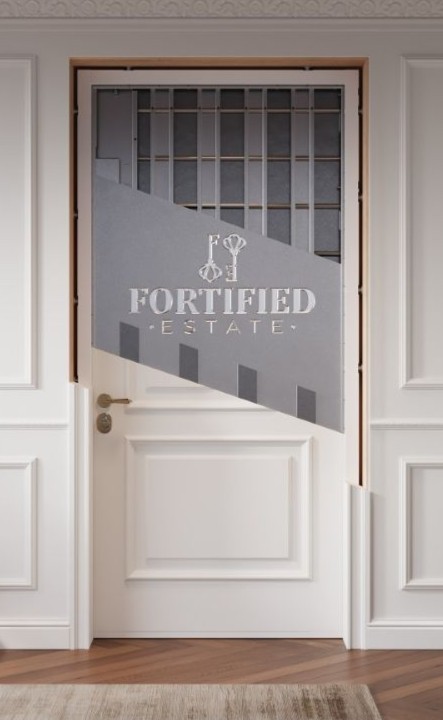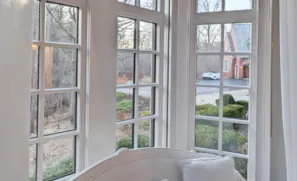Should You Build a Safe Room in Your Basement?
Last Updated 4/22/2021

If you’ve had the idea to build a basement safe room you’re in good company!
Table of Contents
Risks of Building a Safe Room in Your Basement
Water Damage
Having a structure deep in the earth does have its potential downsides. One common one is flooding. No matter how strong humans build their basements, mother nature always has a way of providing enough force for water to break inside, sometimes leading to disaster.
The risk of water damage can make it a poor location to place one’s most precious valuables. Additionally, if you plan to use the space as a basement panic room, you may have perishable foods and drinks that can become compromised due to flood or – even worse – sewage backup.
There are ways to mitigate this risk to your safe room. For simple solutions, shelving can be installed and strategically used to ensure that no items are within a foot of the floor. A more robust but more expensive solution is to install water pumps to avoid flooding.
Still, we’ve all seen the occasional enormous floods that even meteorologists can’t predict, such as Hurricane Harvey in 2017 or weeks of burst pipes in Texas due to historic freezing temperatures in February 2021.
Pests
Pests may be a problem in the basement; the dark, damp environment, which resembles their natural habitat, attracts bugs and mice. Pests could mean the destruction of food supplies and degradation of perhaps fragile valuables. With consideration, clients can implement systems to limit this risk. For example, we recommend that all items – especially food – be kept in sealed containers.
Radon
Homeowners may also take the simple testing step to ensure extended stays in their basement won’t expose their family to dangerous radon levels. The U.S. Environmental Protection Agency estimates that 1 in 15 houses has hazardous levels of radon gas present. Surprisingly, according to the American Lung Association, radon is the second most common cause of deadly lung cancer after smoking.
Distance to Panic Room
Perhaps the most apparent risk of locating a safe room in a basement is simply a logistical one.
A basement location is often far from where occupants will generally be residing. Most people don’t spend much time in the basement. Very few bedrooms are in a cellar – residents use about 70% of their time at home in bedrooms. If a client is concerned about a home invasion or a storm, too much distance to one’s panic room could be a critical error.
On the other hand, if the room’s purpose is not for protecting people and only for highly secure storage of valuables – such as a gun safe room – this may be of minimal importance.
Popular Components of A Safe Room
Benefits of a Basement Safe Room
Strong Walls
One of the most significant benefits of building a safe room in a basement is the possibility of leveraging the natural earth around the basement. The foundation walls are extremely thick and strong compared to normal wooden walls; unlimited earth naturally surrounds them.
It is hard to achieve a bullet resistance level above this! An extreme example of this is the Oak Park Heights prison, where former officer Derek Chauvin was held following his trial. The prison is built into a hillside, causing it to be partially underground, and therefore incomparably hard to escape.
In a client’s basement, it is pretty easy to find a location that uses at least two foundation walls, sometimes three. Leveraging existing walls leaves the homeowner more resources available for the remaining walls and doors to achieve a higher level of security than the budget would have otherwise allowed.
Impenetrable Floor
Similarly, the floor is impenetrable. While an attack from a lower level into the floor of a vault is naturally rare, leveraging a basement floor removes one possible vulnerability in your vault room.
Panic Room Concealment
Another significant benefit of installing a basement safe room is the natural concealment it offers. A criminal more likely notices above-ground rooms. They can easily see exterior walls. There may be windows. If there is a certain amount of square footage on the second floor, there must be at least that much square footage on the first floor.
On the other hand, builders often shape or size basements different than the above-ground floors. There are usually no windows. It is, therefore, easier to partially or fully conceal a safe room when clients locate it underground. Further, burglars generally do not expect to find many valuables in a basement and rarely prioritize it.
Other Basement Safe Room Benefits
Other Benefits
In theory, a basement panic room has the advantage of theoretically leading to an escape tunnel. In practice, though, this elaborate feature is rarely implemented outside of Hollywood films. Maintaining such a tunnel is complicated and is of limited necessity in America, where police response is relatively prompt. Alternatively, depending on the home’s layout, clients can install a high-security, operable window if they need to escape.
An armored basement room can also be an excellent safe room during a tornado. Embedding in the ground and strong masonry walls offer some of the best resistance to damaging winds. Likewise, it can also provide excellent safety during an active hurricane, though resulting flooding could be a risk to the room in the longer term.
Note that the safe room’s location is of minimal importance for an earthquake, as the CDC recommends staying where you are at the time of a quake, rather than moving to another room. One exception is integrating the safe room into a bedroom, as it may protect you if an earthquake occurs while you sleep.









